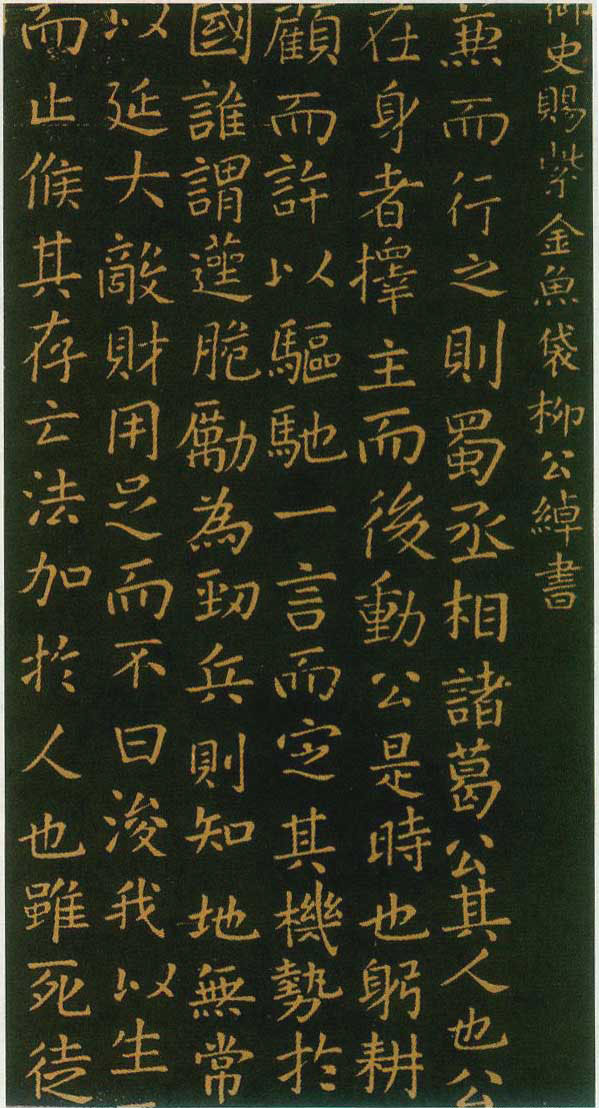Liu Gongchuo (765-832), also known as Kuan, was a native of Jingzhaohua in the Tang Dynasty, which is now Liujiayuan, Cousang Township, Yaozhou District, Tongchuan City, Shaanxi Province. Liu Gongquan's elder brother, Gongquan was thirteen years old. He has a solemn and rigorous personality, likes to make friends with heroes, and is polite to others. He is smart and eager to learn, and is proficient in politics, military affairs, and literature, especially the art of war. He is the governor of Leiguan Prefecture, serves as the censor, is a doctor in the official department, and is the censor. During the reign of Emperor Xianzong, he was an observer of history for Eyue, made meritorious deeds against Wu Yuanji, and paid homage to Jing Zhaoyin. Later, he moved to Hedong Jiedu to make the Minister of the Ministry of Revenue and inspect Zuopushe. He died in 832 AD and was given as a gift to the crown prince Taibao. His posthumous title was "Yuan".
As an official, he is loyal to his duties, upright and upright, resolute, knows people well and is responsible for his duties. When Wu Ji was defeated, he shared the joys and sorrows with the soldiers, appointed capable generals as generals, appeased the families, showed sympathy to the minor ones, and reported success to the court. When he was appointed as Jingzhao Yinjian, he executed traitors, and when he was appointed as Hedong Jiedu envoy, there was a famine, so he prohibited officials from entertaining banquets and kept himself clothed and fed. He once said: "When corrupt officials break the law, the law remains; when traitors dance with the law, the law is destroyed."
Gong Chuo was good at calligraphy, solemn and solemn, simple and natural. Chengdu's "The Temple Stele of Zhuge Wuhou, Prime Minister of Shu" was written when Gong Chuo was appointed Shaoyin of Chengdu. Because it was written by Prime Minister Pei Du and engraved by the famous craftsman Lu Jian, it has "three unique steles". reputation.

Liu Gongchuo's "Ancestral Stele of Zhuge Wuhou, Prime Minister of Shu" (detail), 788 AD








